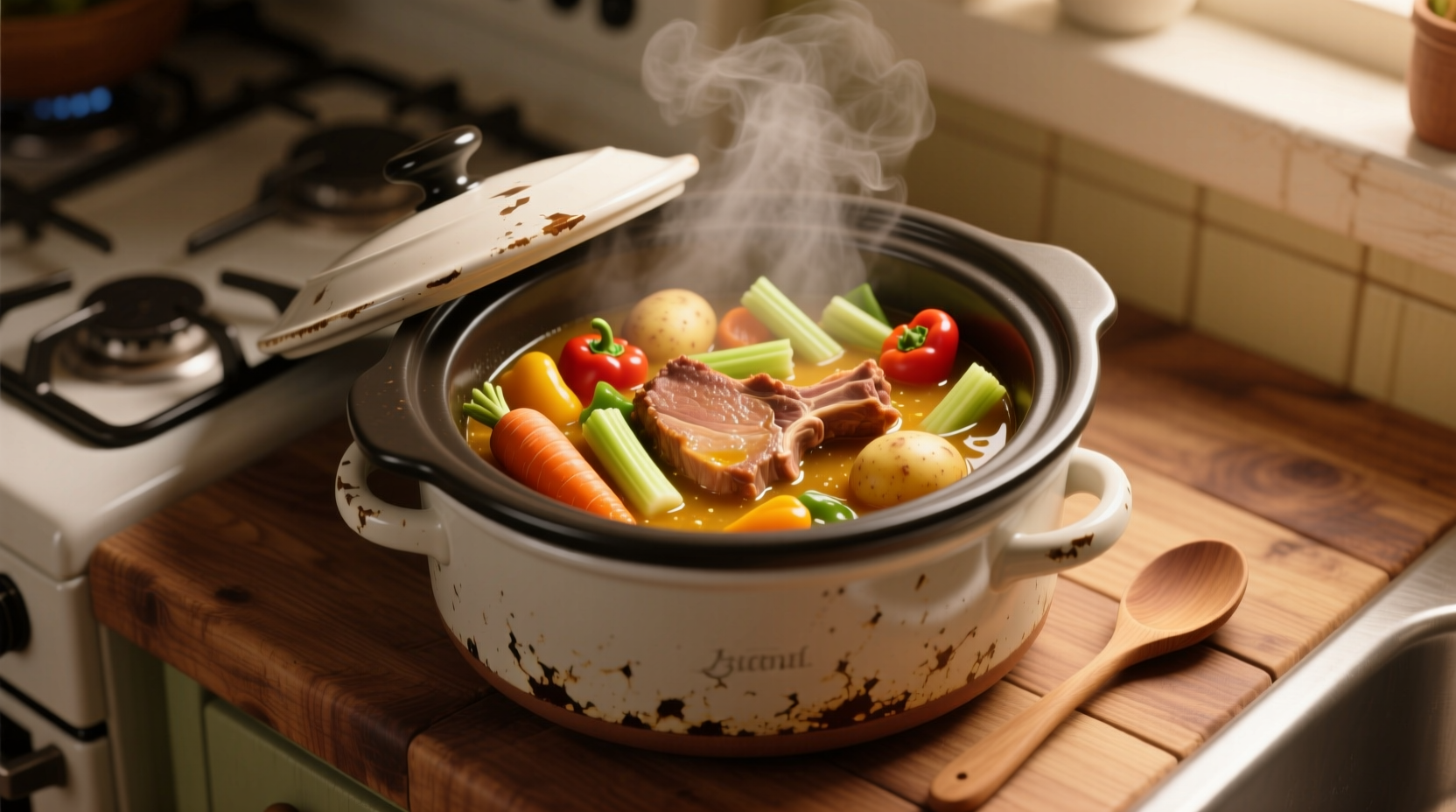Discover the perfect slow cooker timing for juicy, flavorful pork chops every time. This comprehensive guide delivers precise cooking times based on chop thickness, slow cooker settings, and bone configuration - backed by food safety standards and professional cooking techniques.
The Science Behind Slow Cooking Pork Chops
Understanding how slow cooking transforms pork chops helps you achieve optimal results. Unlike high-heat methods that quickly sear the exterior, slow cooking gently breaks down connective tissues while maintaining moisture. The USDA Food Safety and Inspection Service confirms that cooking pork to 145°F (63°C) with a 3-minute rest time eliminates harmful bacteria while preserving juiciness (USDA FSIS).
Slow cookers operate at lower temperatures than conventional ovens - typically between 170-280°F (77-138°C) depending on setting. This gentle heat environment prevents the toughening of muscle fibers that occurs with rapid temperature changes.

Preparation Phase: Setting Up for Success
Proper preparation significantly impacts your final results. Start with these essential steps:
- Select quality chops: Choose chops 1-1.5 inches thick for best slow cooking results
- Dry brine (optional): Salt chops 1 hour before cooking for enhanced flavor penetration
- Seasoning strategy: Apply spices directly to meat rather than mixing with liquid
- Liquid ratio: Use just enough liquid to cover bottom of cooker (1/4-1/2 cup)
- Arrangement matters: Place thicker chops toward cooker edges where heat concentrates
Cooking Time Guidelines by Chop Type
| Chop Type | Thickness | LOW Setting | HIGH Setting | Internal Temp Target |
|---|---|---|---|---|
| Bone-in center cut | 1.25 inches | 5-6 hours | 2.5-3 hours | 145°F (63°C) |
| Boneless center cut | 1 inch | 4-5 hours | 2-2.5 hours | 145°F (63°C) |
| Thin-cut | 0.5 inches | 3-4 hours | 1.5-2 hours | 145°F (63°C) |
| Butterfly chops | 0.75 inches | 3.5-4.5 hours | 1.75-2.25 hours | 145°F (63°C) |
Temperature Verification Process
Never rely solely on cooking time - always verify internal temperature. Insert a digital meat thermometer into the thickest part of the chop, avoiding bone contact:
- Check temperature 30 minutes before expected finish time
- Continue cooking in 15-30 minute increments until reaching 143°F (62°C)
- Remove from slow cooker when 2°F below target (carryover cooking will reach 145°F)
- Allow 3-5 minutes resting time before serving
According to the National Pork Board's research, removing pork chops at 143°F prevents overcooking while ensuring food safety through proper carryover cooking (National Pork Board).
Troubleshooting Common Issues
Even with proper timing, problems can occur. Here's how to fix them:
Dry or Tough Pork Chops
This usually indicates overcooking. For future batches:
- Reduce cooking time by 30-60 minutes
- Use thicker cuts (1.25-1.5 inches)
- Add 2 tablespoons apple cider vinegar to cooking liquid to tenderize
Undercooked Concerns
If chops haven't reached 145°F:
- Continue cooking in 15-minute increments
- Switch to HIGH setting for final 30 minutes
- Check multiple chops as slow cookers have hot spots
Flavor Enhancement Techniques
Elevate your slow cooker pork chops with these professional methods:
- Layered seasoning: Apply spices directly to meat, then add complementary flavors to cooking liquid
- Acid balance: Add 1-2 tablespoons vinegar or citrus juice during last hour of cooking
- Finishing sear: Quickly sear chops in hot skillet after slow cooking for enhanced texture
- Reduction technique: Boil cooking liquid after removing chops to create rich sauce
Professional chefs often use the Maillard reaction principle to develop complex flavors - applying high heat briefly after slow cooking creates delicious caramelization without overcooking the interior.
Storage and Reheating Guidelines
Proper handling maintains food safety and quality:
- Refrigerate leftovers within 2 hours of cooking
- Store in airtight container for up to 4 days
- Reheat to 165°F (74°C) using method that preserves moisture
- Freeze for up to 3 months in vacuum-sealed bags
Slow Cooker Pork Chop FAQ
Can I cook frozen pork chops in a slow cooker?
Yes, but increase cooking time by 50% and ensure internal temperature reaches 145°F. Add 1/4 cup extra liquid to compensate for moisture loss during extended cooking. The USDA recommends using the LOW setting exclusively for frozen meats to ensure safe temperature progression.
Why are my pork chops dry even with proper timing?
Dryness often occurs from overcooking by even 15-30 minutes. Try removing chops at 143°F instead of 145°F, allowing carryover cooking to reach the target temperature. Using chops with more marbling (like blade or shoulder cuts) also helps maintain moisture during slow cooking.
Should I flip pork chops during slow cooking?
Flipping isn't necessary in slow cookers due to the gentle, even heat distribution. However, if cooking multiple layers, rotate the stack halfway through cooking time to ensure even results. Single-layer arrangements produce the most consistent results without flipping.
How much liquid should I use for pork chops in slow cooker?
Use just enough liquid to cover the bottom of the cooker (1/4-1/2 cup). Pork chops release their own juices during cooking, so excessive liquid can dilute flavors and create steamed rather than slow-cooked texture. For best results, use concentrated flavor liquids like reduced stock or wine.
Can I add vegetables to cook with pork chops?
Yes, but arrange vegetables strategically. Place hardy vegetables like potatoes and carrots at the bottom where heat is strongest, with pork chops on top. Add delicate vegetables like peas or zucchini during the last hour of cooking to prevent overcooking. Root vegetables typically need the full cooking time to become tender.











 浙公网安备
33010002000092号
浙公网安备
33010002000092号 浙B2-20120091-4
浙B2-20120091-4